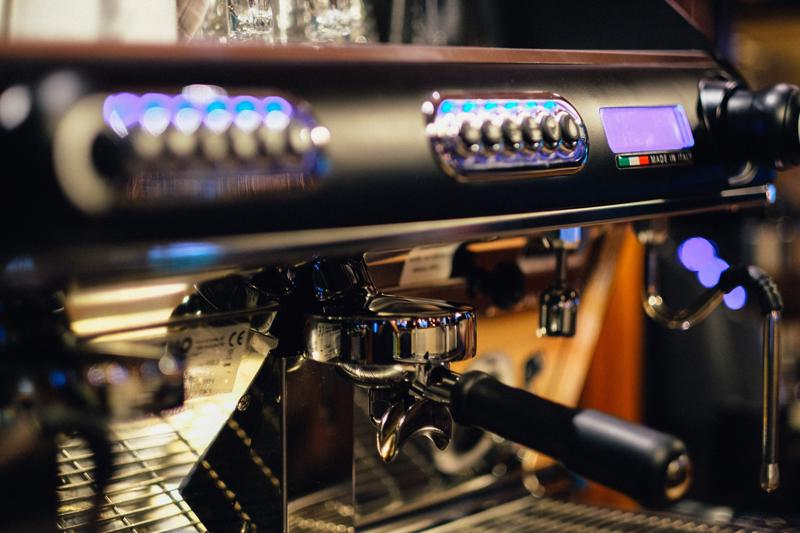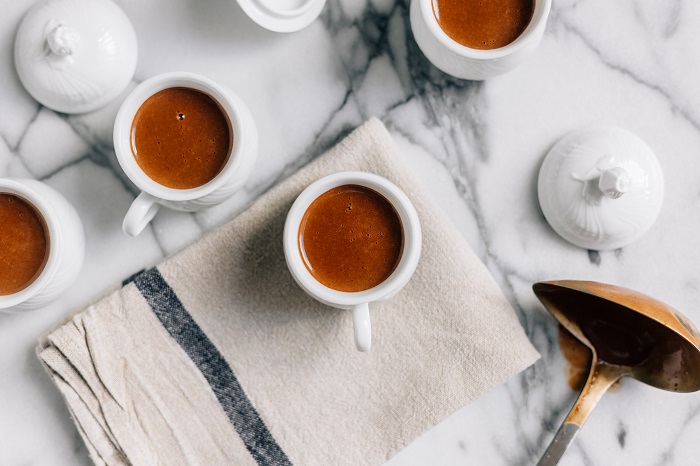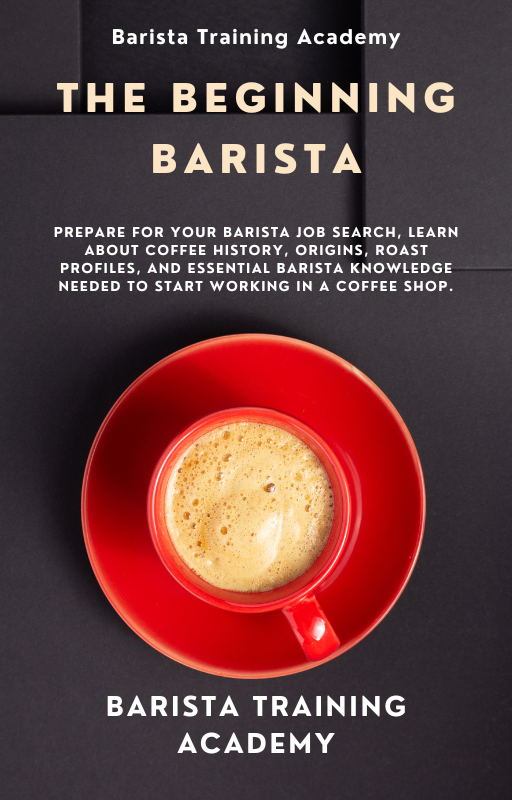Online Barista Training: What is Espresso?
What is Espresso?
We've heard the term espresso or espresso shot, but is espresso a drink? Despite common knowledge that espresso is a drink, it is actually a brewing method. The name of the beverage latched on and is now synonymous with the method of brewing. However, espresso can be served and drunk right after extraction. What distinguishes espresso from any other brewing method is that it can only be prepared with an espresso machine. You can't really drink true espresso without the use of an espresso machine.
Espresso is a small volume beverage ( 25-30 ml or 0.84 – 1 oz). To prepare an espresso, you will use around 18 g to 20 g (0.7 oz) of ground coffee.
After you lock in the portafilter into an espresso machine group head, the hot water (195°- 205°F) will be running for 25-30 sec at 9-10 atm.
Espresso drink is very intense in terms of flavors and color. This intensity happens because the water is pulled under extreme pressure, and it has a high concentration of coffee to water. The standard pressure is 9 bars of pressure.
It is important to remember this when choosing espresso blends. Different coffee notes can translate differently in an espresso shot. Many wholesale coffee roasters will create special blends of coffee only for use in an espresso machine. They are referred to as espresso blends.
As you pull your espresso shot, you will notice that the first drops of espresso start at 5-7 seconds then turn into a dark chocolate stream. By the end, the stream gets fairer. You can enjoy nice crema on top of a well extracted espresso shot.
Ristretto vs. Lungo
As a part of your online barista training, you should learn that there’s a wide range of preferences for espresso extraction. There are different methods of extracting espresso. None is considered “right” or “wrong” but rather based on the preferences of the customer.
It is common to use the term Ristretto or Lungo. You can extract a “restricted” or “long” shot, namely ristretto or lungo.
For a ristretto, you should adjust the grind to be a little bit finer. This will allow slowing the water. This is because the water will take more time to seep through finer grounds due to less space between them. This way, with the usual amount of coffee (around 0.7 oz) and extraction time, you will get less liquid – around 0.84 oz. Ristretto runs slower in thinner streams. It reveals more beading and darker color. The result is more concentrated, sometimes even sourer flavor.
For a lungo, adjust your grind to slightly more coarse. Grind the usual amount of coffee. Remember that there will be less coffee in your portafilter because of the coarser grind. In 25-30 seconds, it’ll give approximately 1.4 oz of liquid output. Lungo runs quicker, soon becoming lighter in colors with less beading. Lungo is a great way to taste coffee – it reveals a broader range of flavors with less sourness.

How to Serve Espresso?
Espresso should be served in a small cup known as demitasse on a saucer with a small spoon. Usually, it is accompanied by a small glass of sparkling or still water. Make sure you ask your customer what kind of water he or she wants.
Keep in mind that if a customer wants more than a double espresso in a drink, you should charge more for an extra shot. Every gram of coffee is a cost for the coffee shop. Appropriately charging for coffee inventory that people order will help to ensure that your coffee shop turns a profit.
Why is it important to dial in your espresso?
If you have hung around a coffee bar, you may have heard the term “dialing in”. This is a common term that essentially means a process of getting the coffee grind to taste just right.
Knowing how to be a barista also means knowing how to dial in your daily espresso shots. Dialing in your coffee is a fundamental process, which will determine the quality of your service. It’s crucial to set your coffee variable early in the morning before the first customer arrives.
You must also dial in your shots several times throughout the day because the conditions in your coffee shop change too: your grinder heats up, espresso machine cools down, ambient temperature changes due to air conditioning and humidity. All these factors determine that your espresso shots pull differently every single time. And therefore the flavor of the coffee.
Dialing-in technique for baristas
When you come to your barista workstation in the morning, make sure to set your tools and calibrate your shots for the best taste. Grind some coffee out if the grinder was vacuumed out the night before dosing your coffee, scale your portafilter, and set its value to 0.
After distributing but before, tamping weigh your portafilter again. One dose should be 18-20 grams (0.63-0.7 oz). Don’t taste the first couple of shots. They will have a metallic taste anyway. Pull your first shots to warm up your espresso machine and group heads.
Look closely at your third shot: when the first drips start coming out, when drips turn into streams, how long it takes to extract a shot, and what is the weight of the output. The color is also an important indicator to notice.
Making adjustments to your espresso shot
If you are not satisfied with how your espresso runs (too fast or too slow) or with your shot's color and taste, you need to make certain adjustments and recalibrate your variables. It makes an important part of your barista training and successful barista career.
Grind adjustments are supposed to control how fast your espresso extracts. Suppose your espresso pulls too slow – set particle size to coarser. Always change one notch at a time and purge the grinder after that.
If your shot is low in body and thin, you might also want to decrease the water flow and make higher coffee to water ratio.
Always change one variable at a time.
Barista Career Tips:
Learning about coffee and espresso will help you get your barista job, even if you have no barista experience. Keep reading our blog for topics related to being a barista and getting a job in coffee!

Brought to you by Barista Training Academy, “The Beginning Barista,” Your Ultimate Prep Guide to Getting Your First Job as a Barista” is an ultimate resource that is available online and is affordable for anybody who is looking to start a career in the coffee industry. For more information, visit our blog.
